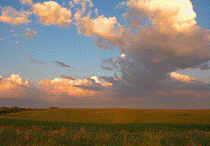
Proceedings of the North American Prairie Conferences
Date of this Version
2004
Document Type
Article
Abstract
Aldo Leopold, who spent much of his adult life in Wisconsin, observed the prairie's loss in A Sand County Almanac as he passed by a lone Silphium growing in a Sauk County cemetery: "What a thousand acres of Silphiums looked like when they tickled the bellies of the buffalo is a question never again to be answered and perhaps not even asked."
Wisconsin has a strong environmental legacy. The writings and conservation efforts of individuals, such as John Muir and Aldo Leopold, have deep Wisconsin connections. Prairie studies and restoration experiments, begun by botanists John Curtis and Henry Greene in the late 1930s, continue to the present. The University of Wisconsin Arboretum initiated the first recognized prairie restoration and continues to study this ecosystem through Greene Prairie and Curtis Prairie restorations as well as the Faville Prairie remnant along the Crawfish River near Lake Mills. Wisconsin is also an important setting for the environmental arts. Jens Jensen and Frank Lloyd Wright both resided for a portion of their lives in Wisconsin and heavily promoted the idea of the prairie style in landscape gardening and in architecture. Today, individuals at the University of Wisconsin, the Wisconsin Department of Natural Resources, The Prairie Enthusiasts, The Nature Conservancy, and many of Wisconsin's citizens carry on this more than a century old tradition.


Comments
Published in Dave Egan & John A. Harrington, editors, Proceedings of the 19th North American Prairie Conference: The Conservation Legacy Lives On..., University of Wisconsin-Madison, August 8-12, 2004 (Proceedings of the North American Prairie Conference, 19), Madison, WI: University of Wisconsin-Madison, 2004.